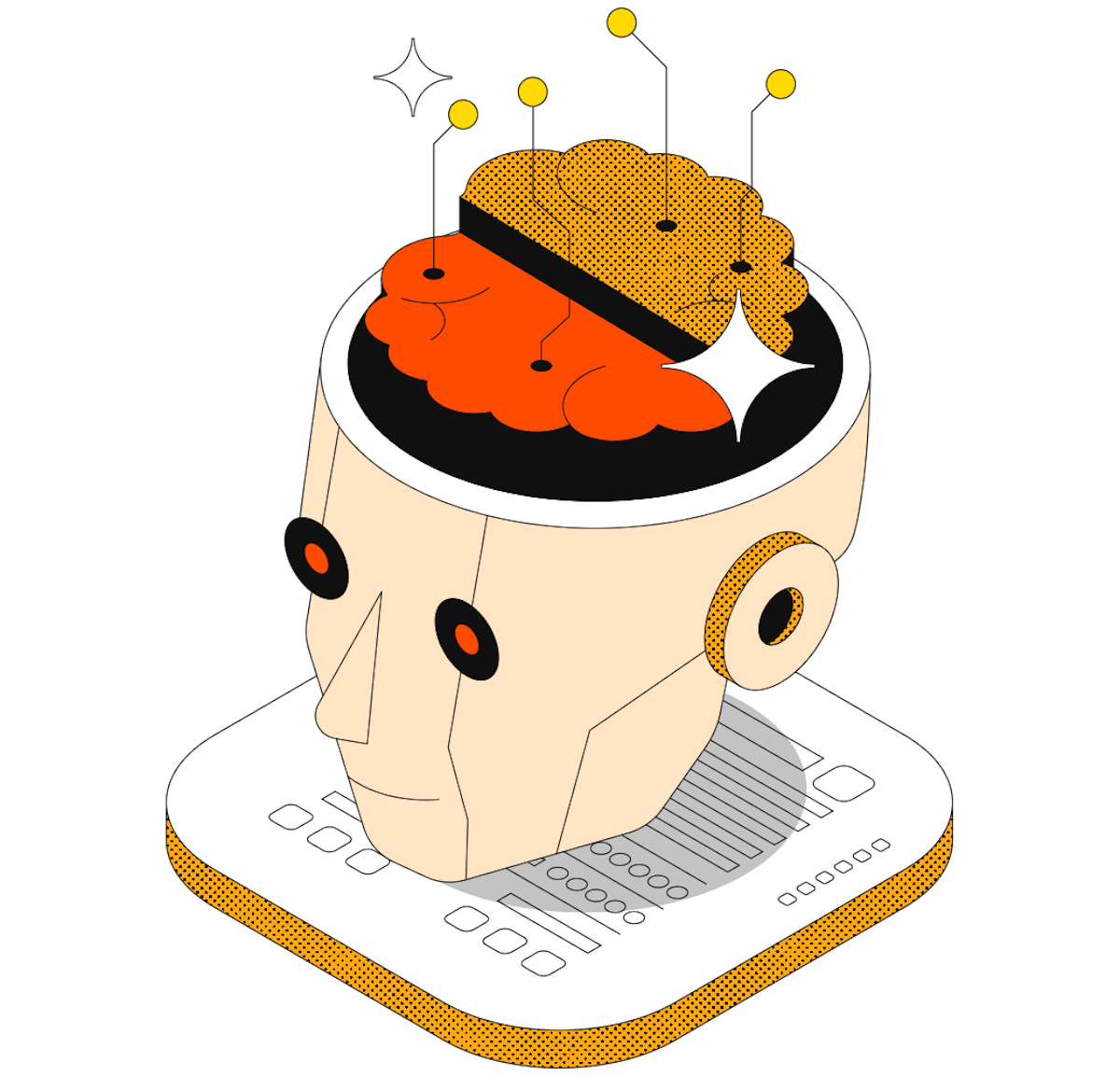Survey: AI adoption at work requires confidence-building support.
Tips for employers to navigate the AI learning curve and achieve success with AI.

AI · 5 min read
Artificial intelligence (AI) has rapidly gained popularity as a transformative technology that’s shaping our perspective on productivity in the workplace. With the promise of automating tasks and improving efficiency, many organizations are embracing AI tools to optimize their everyday operations, or exploring them to stay ahead in the digital age.
In fact, we recently surveyed 1,000 adults and found that 89% of workplaces have a neutral or positive outlook on the use of AI tools. But only 53% of people surveyed have tried generative AI tools—with the majority (40%) testing the technology through the personal use of ChatGPT and Google Bard. And of those who have tried a generative AI tool, only 22% feel confident in their ability to write prompts that successfully leverage AI. They’re also struggling to get support—50% say that even when they have access to a tool, there are no AI trainings, leaving them to figure it out for themselves. In this blog post, we will explore the challenges employees face in learning and using AI tools. We will also provide tips for employers to navigate the AI learning curve and achieve success with AI.The problem with AI prompts
When introduced to an AI tool, employees have to first envision the outcome they want, and then retrofit a prompt to try and achieve it. Bill French, founder and Chief Analytics Officer of AI-enhanced analytics platform Stream It (and Coda enthusiast!), has noted:As early adopters of AI, we have grand visions of escalating our work output. There’s no shortage of media outlets and multi-message Twitter posts that have convinced the masses that AI makes digital work a breeze. Reality check: it doesn’t.
Bill French
Consultant at Global Technologies Corporation
Successful prompts are not as easy to create as you first imagine. How hard can it be? It’s just words. The reality is that it is both hard and complex, depending on the AI objective.
Bill French
Consultant at Global Technologies Corporation
How to accelerate through the learning curve
Of the employees surveyed, 34% feel they lack the expertise to use AI tools to their full potential, and 20% do not fully understand the benefits of AI. When it comes to raising confidence—and subsequently, impact—in AI, here are two strategies we’ve had success with at Coda:Start small: AI as an intern
We suggest reframing early expectations, thinking of AI as an intern instead, for example, and celebrating the initial, smaller examples. At Coda, we have an #AI-wins Slack channel where we embrace AI successes of all magnitudes.- Converting bullet points to a table.
- Creating a summary of meeting notes.
- Generating a table of 10 icebreakers.
Fostering a community of shared experience
When trying to further explore the subject, the majority (53%) either turn to YouTube or search Google for tutorials and guidance. Given how quickly AI tools have entered the market, many vendors and companies are quickly trying to create onboarding materials, but there’s several opportunities to help employees learn from each other.- Share an internal memo: Remind employees of your AI policies, the approved list of AI tools, and how to access them. This will help employees feel comfortable embracing them, and underscore which ones they should not use.
- Establish an AI committee: Creating a cross-functional AI committee or a “tiger team” can leverage the expertise and enthusiasm of early adopters. Many might see this as a way to gain visibility across their organization, or to learn a new skill.
- Training programs: Vendor-led or company-led training programs can help employees learn best practices for AI usage. These programs can be supplemented by training sessions within each team, potentially led by a member of the AI committee.
- One-off support: Offering 1:1 office hours with AI experts, either from the AI committee or vendors, can make others feel comfortable asking questions. Additionally, creating a dedicated Slack or Teams channel for AI-related questions can foster a collaborative learning environment. Encourage others to share all wins, no matter how small, as well as fails, so others can give suggestions and help troubleshoot.
- Encourage cross-functional collaboration: Offsites and hackathons provide a creative environment, and often bring together teams that don’t typically collaborate. Dedicate time to exploring AI applications, so co-workers can foster new ideas and spread best practices.
- Embrace different adoption rates: Not everyone will be an early adopter of AI—encourage curiosity and provide support for different learning paces. Ask managers to keep this in mind as they mentor their team and new employees.
Conclusion
At this point, AI is hard for employees to learn and use—and that’s ok. In fact, it’s common. Employers have many ways to overcome the challenges and ensure that AI is adding lift, not drag. As AI continues to reshape the workplace, companies that effectively navigate the AI learning curve will become role models for others. By embracing the beginning of the learning curve and celebrating small examples, you can see immediate impact and foster excitement among early adopters. To help employees further progress, establish AI committees, offer training programs, and encourage cross-functional collaboration—and don’t stop celebrating wins of all kinds. With a proactive approach to AI learning and development, companies can unlock the full potential of their AI tools and drive innovation internally.Related posts
Explore more stories about AI












